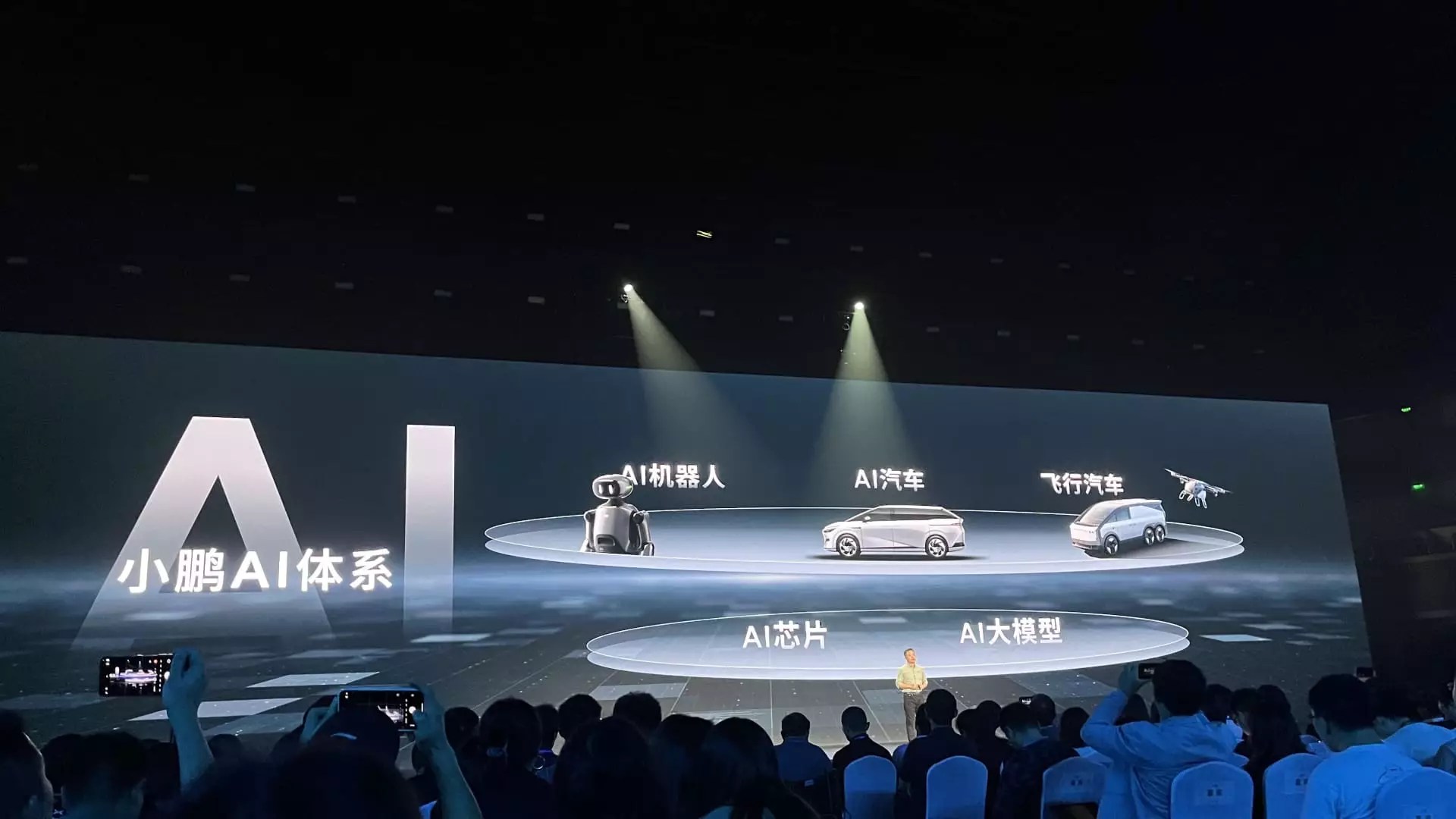China’s electric vehicle (EV) market is at a critical juncture, and the emergence of companies like Xpeng signals a significant shift in dynamics. As EVs become more mainstream, fueled by innovations like driver-assist systems and competitive pricing, Xpeng has positioned itself as a formidable player. Delivering over 30,000 cars monthly since November—a remarkable feat for a startup—gives Xpeng an edge over established giants such as BYD and Tesla. What sets this company apart is not only its ambitious sales targets but also its profound understanding of the market and consumer expectations.
Xpeng’s strategic emphasis on affordability is pivotal. The introduction of the Mona M03 represents a calculated decision to penetrate the market effectively by offering budget-friendly options. In a consumer landscape where price sensitivity is pronounced, this approach not only attracts a wider audience but also builds brand loyalty. The expectation to double sales compared to 2024 suggests that the company’s leadership is not merely basking in current success but is geared for aggressive growth in a competitive landscape.
Profits on the Horizon
Expectations are high for Xpeng to turn a profit by the fourth quarter of this year. This could serve as a game-changer in solidifying its reputation not just as a tech-savvy brand but as a financially viable entity in a space littered with startups struggling to break even. Analysts from Bank of America have shown increased confidence, raising their price target based on anticipated strong sales driven by an impressive product pipeline. Such optimism reflects a growing consensus that Xpeng is poised for significant advancements in the coming years.
However, it’s essential to approach this optimism with caution. While the macroeconomic conditions appear favorable for Xpeng, the EV market remains a brutal battleground, characterized by intense competition. Unsurprisingly, even as Bank of America rates Xpeng as a ‘buy’, Barclays has issued a contrasting assessment with an underweight rating. This divergence highlights the contrasts in expectations regarding Xpeng’s ability to maintain its growth trajectory against formidable competitors who adapt at lightning speed.
A Technological Turning Point
The competition has heated up with industry leader BYD revealing ultra-fast charging technologies and sophisticated driver-assist systems. As manufacturing processes advance, technologies once regarded as premium features are quickly becoming standard. The fact that autonomous driving is no longer a luxury but a consumer expectation introduces complexities for automakers who have not yet adapted.
Shay Natarajan’s insights reflect the rapid progression from basic Level 2 (L2) driver-assist features towards the more advanced Level 3 (L3). Tesla, despite its reputation, risks being left behind if it continues to charge for features that may soon be offered free by competitors. This is critical for Xpeng, which has integrated driver-assist technology into its offering from the outset. As the market demands more advanced features, companies that do not adapt could find themselves isolated from consumer preferences.
The Mixed Blessing of Innovation
Despite Xpeng’s innovative spirit, it faces challenges that extend beyond competition. The aggressive approach in research and development (R&D) comes with increased costs, placing a burden on profitability. J.P. Morgan has raised expectations for earnings, but their revised price target reflects apprehensions regarding high R&D expenditure coupled with evolving market pricing dynamics. The cost of staying ahead could directly impact Xpeng’s financial strategy in the coming years.
Critics may argue that while Xpeng’s technology promises advancement, the question remains: can the company transform this innovation into sustained, profitable growth? The ambitious roadmap of launching newer models, including a sophisticated version of the Mona brand with advanced autonomous features, will demand not only technical success but also perceptiveness in market acceptance.
Final Thoughts: A Balancing Act Ahead
Xpeng stands at a crossroads where innovation, market competitiveness, and consumer sentiment intersect. With more than 30,000 vehicles sold monthly and a strong ambitions for profit, it’s an exciting time for the company. However, the skepticism from some analysts cannot be understated. The electric vehicle market in China is burgeoning, yet the stakes are higher than ever. As consumer preferences shift rapidly, only those companies that can adapt their offerings to meet changing demands will thrive. For Xpeng, proving that its initial momentum is not a fleeting moment but the beginning of a sustainable trajectory will be the ultimate challenge.


Leave a Reply